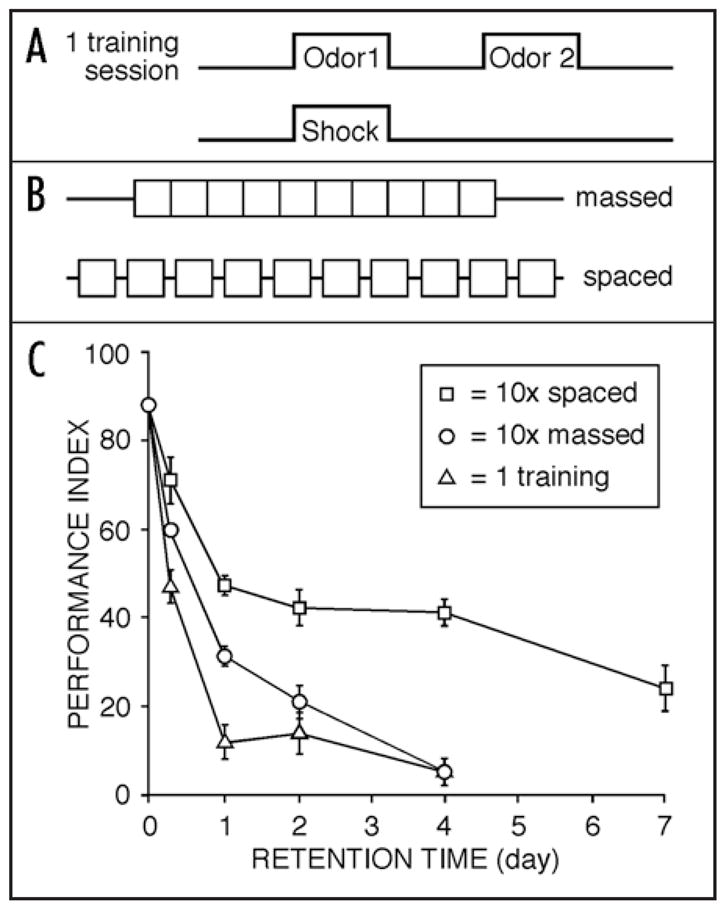Figure 2.

Classical olfactory conditioning leads to long-term memory in Drosophila. (A) Drosophila can be trained to remember the association between an odor (CS) and a footshock (US). (B) Repeated training (10 training sessions) can be performed without rest intervals (massed training) or with 15-minute rest intervals between training sessions (spaced training). (C) Performance index curve after a single training session (△) spaced training (□) or massed training (○). Single training leads to a memory that decays rapidly but persists at low levels for up to four days. Repeated training without rest intervals leads to a higher level of performance, but also lasts approximately four days. In contrast, the same amount of repeated training separated by rest intervals leads to a memory lasting for at least one week at a higher performance level (Modified after Tully et al.75).
